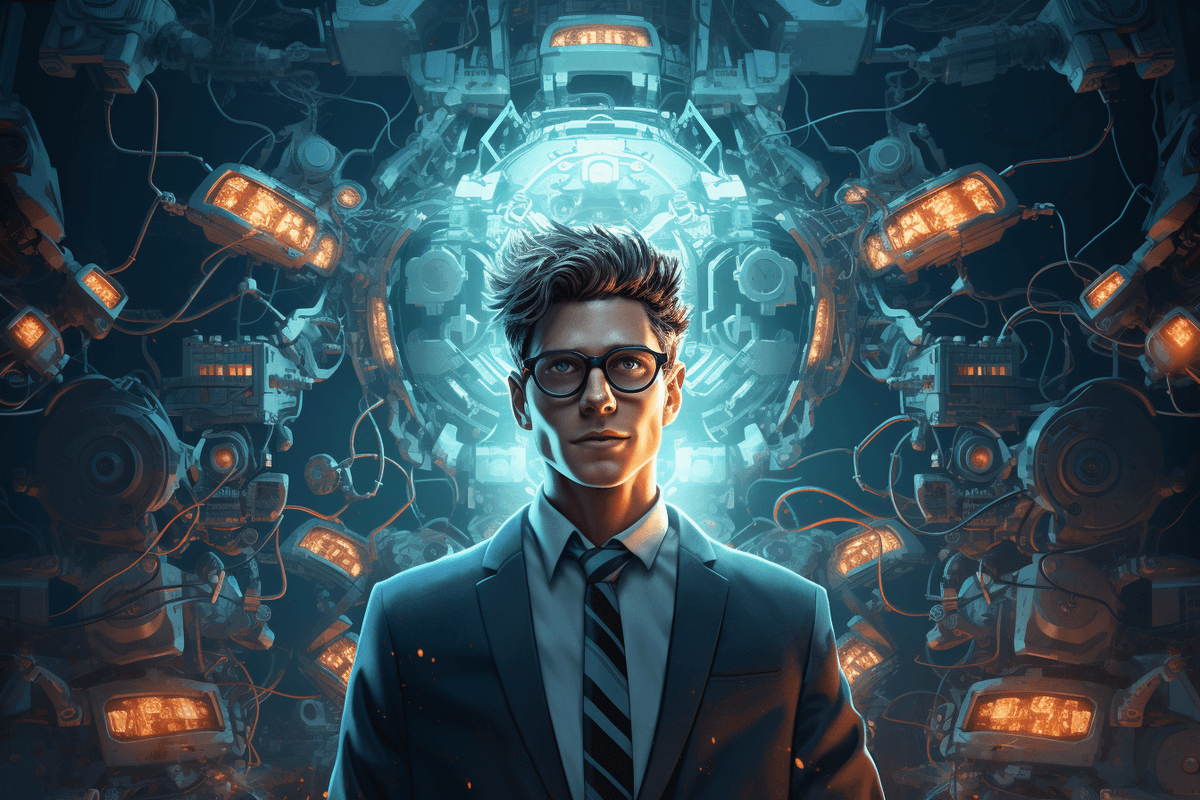Written by Daniel Errante
The Dawn of AI Image Generation in 2023

Have you ever wondered about the future of aesthetics where technology paints a canvas with imagination? That future is now, in 2023, where Artificial Intelligence (AI) image generation is revolutionizing how we bring our creative imageries to life.
AI image generation is no alien to us. We have seen its seeds in the technological vitality of the past decade, and now, they have blossomed into a prolific technology. AI produces surreal, fantastical, and hyper-realistic images and visuals with an artistic flair surpassing human capabilities. This article will delve into the depths of AI image generation.
Defining AI Image Generation
AI Image Generation involves using algorithms to create graphical content that conveys meaning. This cutting edge technology utilizes models like Generative Adversarial Networks (GANs) to generate images from scratch. These images can range from landscapes and human faces to objects or even abstract art forms. Over time this technology has evolved from protecting copyrights to becoming a source of innovation, in the world of art.
The Evolution of AI Image Generation
The journey of AI image generation has been truly captivating. It all began with Googles DeepDream in 2015 when ordinary images were transformed into pieces of art.
The advancement continued as generative models emerged, resulting in outputs that became more refined, lifelike and focused on details.
Back, in 2018 NVIDIA introduced StyleGAN, which presented a collection of AI generated faces that bewildered the world due to their indistinguishable resemblance to actual human faces. Forward to 2023 StyleGAN3 has undergone advancements. It now empowers artists to craft realistic portraits, landscapes, with dream qualities transfer styles seamlessly blend attributes effortlessly and so much more!
The Comprehensive Impact of AI Image Generation
Artificial Intelligence image generation has impacted numerous fields ranging from entertainment to healthcare.
In the film industry, it’s used for creating hyper-realistic textures, generating convincing synthetic stunt doubles, or producing dynamic backgrounds. Renowned animation studios have integrated AI into their modelling pipelines, enhancing the aesthetic richness of their productions.
The fashion industry is another sector where AI image generation has a profound impact. With AI, designers create realistic virtual prototypes of garments, thus saving time, effort, and sustainability concerns related to physical sampling.
In healthcare, doctors analyze the AI-generated images to diagnose diseases and predict potential health hazards, improving preventive care.
Moreover, the application of AI image generation in online privacy is commendable. AI-generated avatars are used in place of real images to ensure online safety, and AI-generated backgrounds help prevent information leakage during virtual meetings.
Drawbacks and Ethical Concerns
With every technological development, there are consequential drawbacks. With AI image generation, the concern majorly lies in authenticity and ethics.
Firstly, Deepfakes - AI-generated visuals that manipulate and impersonate human faces or voices – have raised pressing concerns about privacy violations, misinformation and identity theft. Deepfakes can be created to misrepresent individuals in harmful ways thus challenging the authenticity and credibility of online content.
Furthermore, unlike human artists, AI does not have a consciousness. When AI creates something, it merely replicates or agglomerates patterns from its training data. Thus, the question of ownership and copyrights crops up - who owns the right to the AI-generated image, the AI, the user, or the developers?
The Future of AI Image Generation
Despite the challenges, the future of AI image generation is promising with a plethora of exciting possibilities. The next frontier lies in personalizing AI-generated content. Imagine receiving personalized video marketing materials tailored explicitly to your preferences. Imagine playing a video game where AI algorithms generate dynamic landscapes that adapt to your gameplay.
Moreover, innovations such as Domain Adaptation Techniques would help to improve how AI identifies and analyses patterns across different domains. This would allow for even more complex and accurate image production across a wider variety of subjects.
As technology continues to evolve, AI image generation will retain its place at the forefront of digital transformation.
Wrapping Up
The year 2023 marks a new era of technology, and AI image generation is a testament to that progression. AI Image Generation is not just an impressive technological feat; it is a tool of creativity, a testament to our unleashed imagination, and a mirror reflecting the prowess of modern civilization.
While we need to navigate the ethics surrounding AI image generation carefully, it’s undeniable that this technology is only at its beginning, and there is so much untapped potential yet to be unleashed.
Don't let complicated software hold you back. Step into effortless content creation with Typli and elevate your writing today. Experience AI content writing made simple.